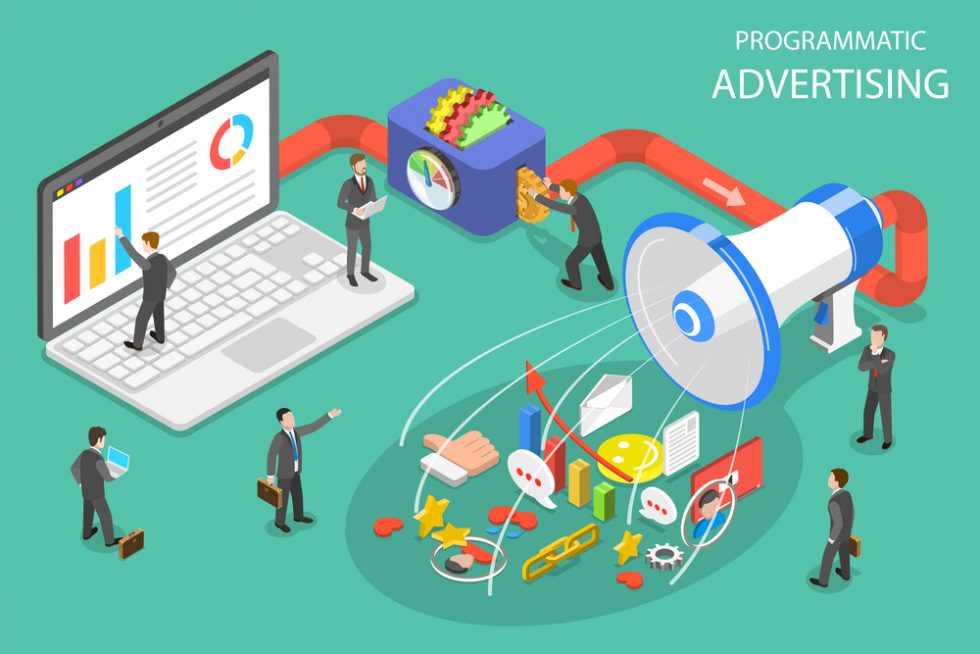
By Jay Bemis | Advertising Systems Inc.
“Programmatic” has become an emblematic description of today’s business-to-business marketing space. Business data and analytics experts Dun & Bradstreet reported last week that 63 percent of B2B marketers that they polled worldwide already are buying or selling ads programmatically — and 41 percent of those marketers expect to spend even more on programmatic buys in 2019.
The main appeal for these marketers is the ability of programmatic ads to target specific accounts — and the business people within those accounts — “with ads that tell a story sequentially through the buyer’s journey,” eMarketer said in assessing the D&B report.
“For example, a buyer might be served an awareness-type ad, followed by a series of ads that give more detailed information on a product or brand, finishing with one that’s meant to close the deal.”
Forty-eight percent of B2B marketers already had this type of ad personalization and sequencing in place, D&B found in its poll.
“If you’re asking me what the thing of the future is, it’s sequencing and making sure you’re serving relevant content, and not overexposing people to one message,” Steve Weeks, director of media strategy and planning at Adobe, told eMarketer. “A programmatic platform allows you to do that better than you could going direct.”
What Is Programmatic Advertising?
Back in 2016, when such strategies as artificial intelligence and programmatic advertising were becoming more and more a part of many marketing conversations, Dun & Bradstreet offered this definition of programmatic ads:
“Programmatic advertising refers to the use of automated technology to buy and sell digital media across millions of websites, as opposed to relying on human interactions to manually secure digital ad placements. In other words, anytime a machine is used to purchase and deliver a digital ad, it’s considered programmatic.
“ … In essence, programmatic intends to make media buying simpler, more cost-effective, and most importantly, highly targeted. It is intended to solve the inefficiencies of digital advertising by leveraging customer data and insights to target the right user at the right time in the right environment. It’s for these reasons marketers are giving programmatic rave reviews.”
Targeting Not the Only Programmatic Plus
In addition to its targeting benefits, programmatic gets plaudits from marketers for its ability to ingest “firmographic data.” D&B defines “firmographics” as “business-related criteria that can help you narrow down your audience to focus in on those organizations most likely to represent potential clients or customers.”
These firmographic data sets, D&B notes, can include everything from a company’s geography and employee size to its annual revenue and total assets. “These insights can help you understand where to spend time and money prospecting and upselling. And best of all, this data can be layered on your media buy in a programmatic environment.”
Marketers also like the ways that programmatic ad buys can open their businesses to new environments. Because programmatic focuses on audience buying, rather than traditional site buys, it can help marketers find prospects in environments beyond the standard industry sites on which they’re relied.
Then there’s the cost efficiency that programmatic brings to the table — a point that marketers are sure to want to make when they’re briefing The Boss.
“Because programmatic advertising leverages first- and third-party data to target down a specific employee at a company, there’s no need to pay exorbitant CPMs for impressions that aren’t optimally targeted,” D&B says.
“What’s more, programmatic provides the ability to adjust the price or ‘bid’ for specific media placements based on ROAS (returns on ad spend) and real-time data, rather than arbitrary pricing.”
Consult Before Joining the Programmatic Fray
Is your company among those nearly four of 10 that D&B says are late climbing onto the programmatic bandwagon? Understanding such factors as the bidding process for programmatic ad placements — there are open auctions versus private auctions, and programmatic direct versus programmatic real-time bidding, for example — is why you may want to contact your marketing consultant first.
You also need to get your sales and other departments to hop aboard, as eMarketer noted when it reported on the D&B study last week.
“Before B2Bs get lured into thinking that programmatic can magically enable account-based success, there’s a lot of groundwork that needs to be done,” eMarketer said. “For example, it’s crucial that marketing and sales teams work together to identify what their most profitable accounts have in common.“
Similarities to look for could be industry vertical, revenues or particular technologies. The teams can then align on a list of specific accounts to target and focus on coordinating messaging efforts.”
